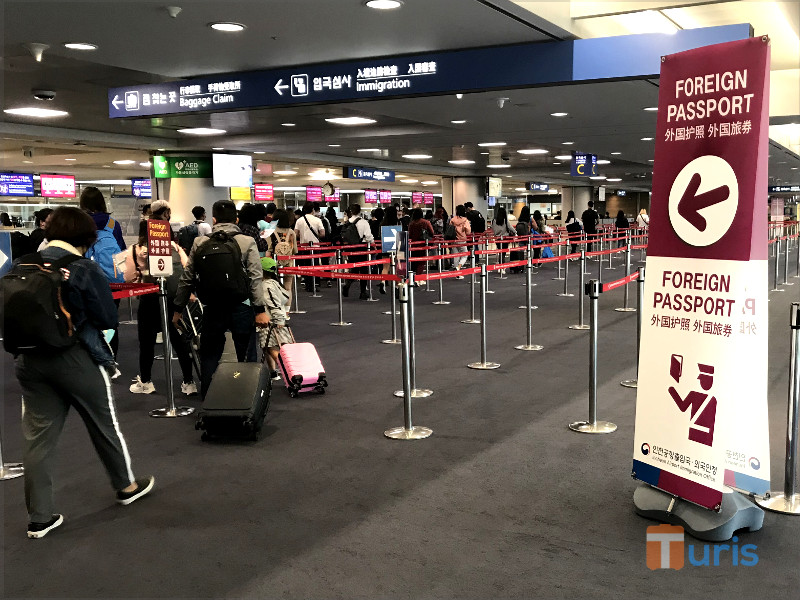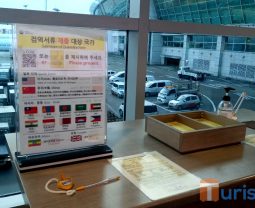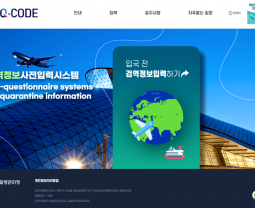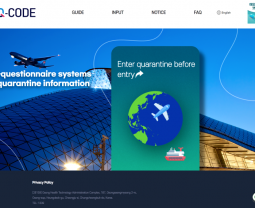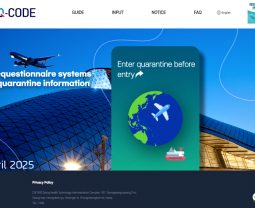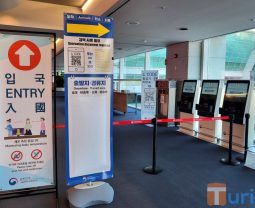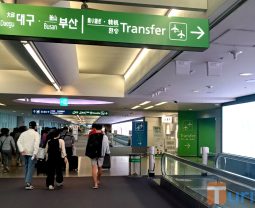From February 24th, 2025, you can also submit e-Arrival card when entering Korea. Paper arrival card explained in this article will be phased out by the end of 2025. Here is how you can submit Korea e-Arrival card for your upcoming Korea trip.
When arriving in Korea as a tourist, is it required to submit arrival card for immigration clearance? This is a common question that may pop up if it is your first time visiting Korea. Other travelers may also have the same question. The quick answer: YES. Filling out the arrival card is one of the requirements for an unregistered foreign visitor or tourist to enter Korea.
How does the arrival card look like and what information should be provided in the arrival card? This article will explain what you need to prepare when arriving in Korea especially to ensure smooth process of immigration clearance.
Korea Arrival Procedure
According to Incheon Airport authority, there were around 28 million passengers arriving in South Korea in 2023, an increase of more than 200% compared to the previous year (2022). Such increase in tourist arrival indicates that tourism to South Korea has been rebounding to approach the pre-pandemic level. Before the pandemic, the airport authority recorded around 36 million international passengers arriving at the airport. With inbound traffic reached 80% of pre-pandemic level in 2023, it is not an exaggeration to assume that the inbound tourism to South Korea will fully recover in 2024.
If you plan to travel to South Korea as a tourist, you may be curious about the experience during the arrival process at the airport. Our opinion may be subjective, but you can expect pleasant experience on your arrival, other than perhaps the long queue for the immigration clearance that has often become inevitable as more tourists come to visit Korea.
Common flows that you will experience when arriving in Korea right after disembarking from the airplane are as follows:
- Walking from the arrival gate to the arrival checkpoints.
- First checkpoint, health status clearance. Those who arrive from countries under special monitoring shall present Q-Code or submit health declaration form. Other travelers will only undergo automated body temperature monitoring through sensors installed near the checkpoint.
- Second checkpoint, immigration clearance. As a tourist, you must at least show your passport, boarding pass, and Korea arrival card to the immigration officer. The officer may ask you to present additional document depending on your visa type or status of stay.
- Baggage claim. You pick up your checked-in baggage from the designated carousel in the baggage claim area.
- Third checkpoint, customs clearance. You can walk through the green line if you do not have anything to declare or go through the red line to proceed with customs declaration.
- Walking to the arrival hall / greeting area. You have now officially entered Korea and can go to your first destination from the airport using various transportation means (bus, subway, taxi, van or private car).
Now, let’s specifically discuss the immigration clearance process.
Klook.comInformation to Fill in Korea Arrival Card
During your flight to Korea, the cabin crew will distribute arrival cards to the passengers. An empty, unfilled arrival card will look like the image shown below.
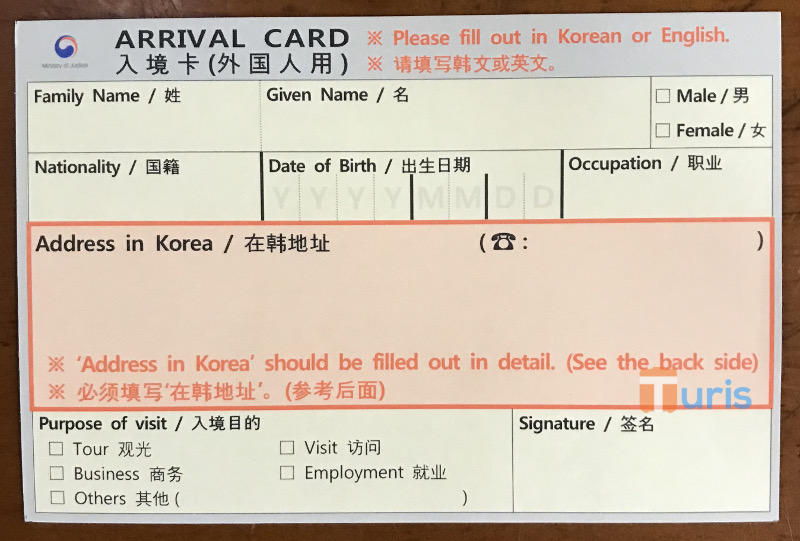
Korea arrival card is written in two languages, English and non-English language that can be one of the languages used in a country with high inbound tourist numbers to Korea, such as: Chinese, Japanese, Thai, and Vietnamese. The arrival card is written on both sides. The front side contains a form related to the arrival in Korea that should be filled out by the visitor. The back side shows some brief instruction on how to fill the form.
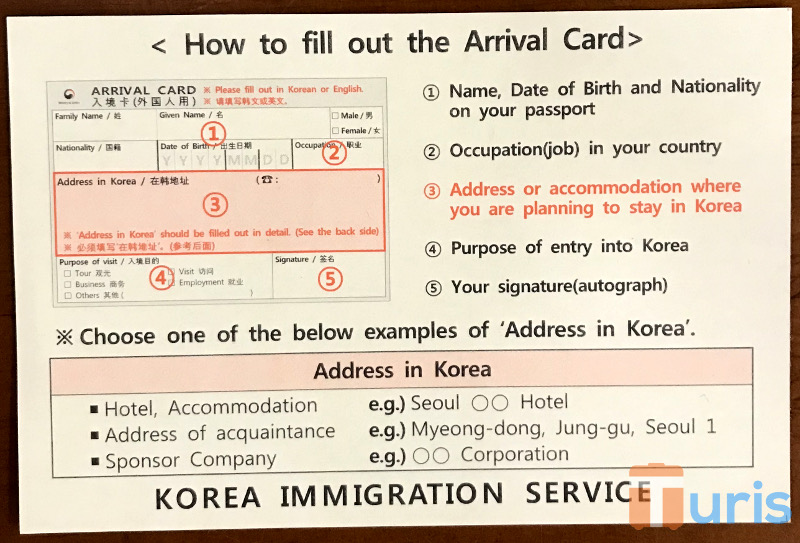
Now, let’s label the form and discuss in more details how each column on the arrival card form should be filled.
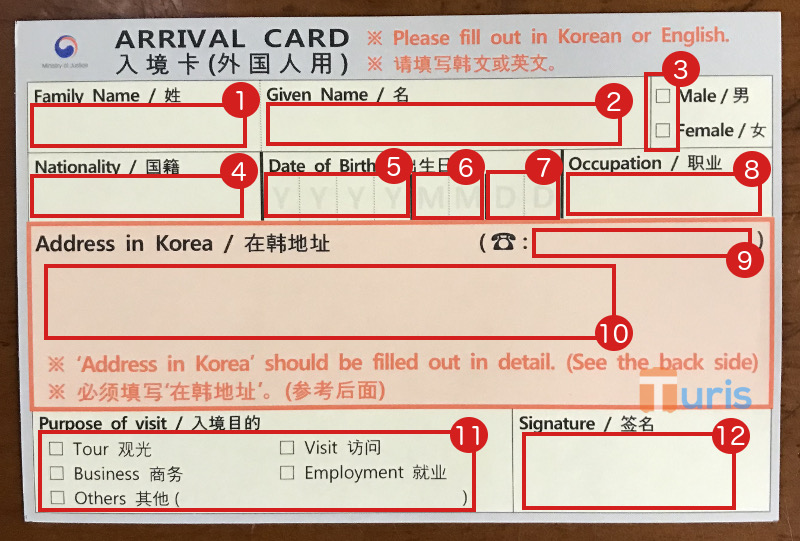
Explanation for each labeled field in the arrival form is summarized in the table below.
| No | Field Name | Description | Data Source |
| 1 | Family Name | Last name as written on passport | Passport |
| 2 | Given Name | First and middle name as written on passport. Given names can also be written according to what’s written in the machine-readable zone (MRZ) of the passport, which sometimes omits middle name. | Passport |
| 3 | Gender | Binary gender. Male or Female | Passport |
| 4 | Nationality | Nationality of passport holder | Passport |
| 5 | Date of birth (year) | Four digit year of birth as written on passport | Passport |
| 6 | Date of birth (month) | Two digit month of birth as written on passport | Passport |
| 7 | Date of birth (day) | Two digit date of birth as written on passport | Passport |
| 8 | Occupation | Visitor’s occupation in the origin country | Residence / citizen / business card |
| 9 | Phone number | Contactable phone number during the stay in Korea | Hotel reservation / Korean SIM card |
| 10 | Address in Korea | Address of accommodation or place of stay in Korea | Hotel reservation / sponsor letter |
| 11 | Purpose of visit | Purpose of visit based on the available categories: tour, business, visit, employment, or other | Visa document |
| 12 | Signature | Registered / recorded signature |
As you can see from the table above, data from several sources is needed to fill out the form in Korea arrival card. Frequent flyers should not have any problem in locating such information. If you’re traveling to South Korea for the first time, don’t worry. We will show you how to complete the form.
How to Fill Out Korea Arrival Card
To complete the form in Korea arrival card, we need to pull data from several sources. Main data source is the passport. We will choose some passport specimens to give you some idea on how to put the data in the passport into the form.
Passport sample #1: United States passport (next generation)
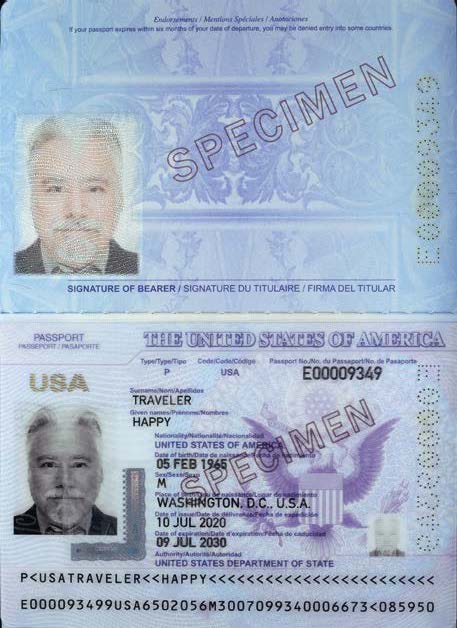
Passport sample #2: Philippine passport
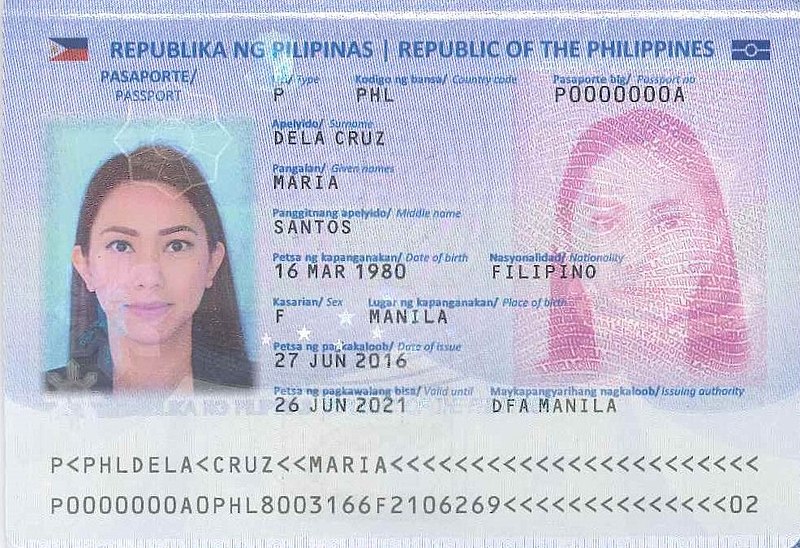
Using the above passport specimens as references, we can map the information in each passport specimen to the corresponding form field in Korea arrival card based on the labeling/numbering in the information table provided earlier, as follows.
Labeled passport sample #1 (United States passport):
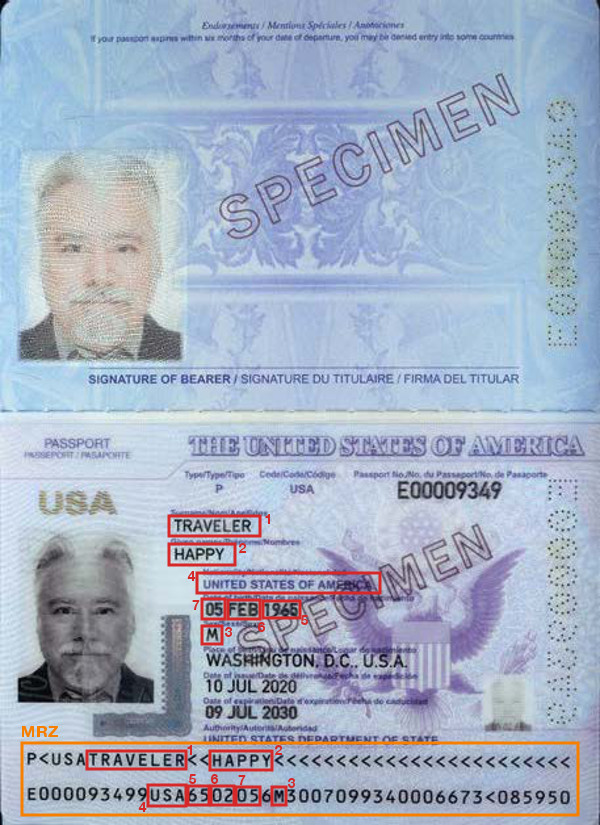
Labeled passport sample #2 (Philippine passport):
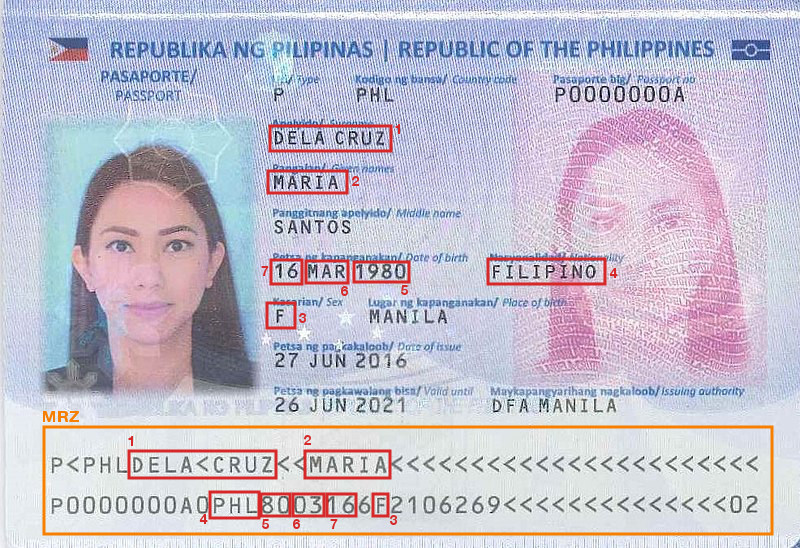
Putting the information in the labeled passport specimens to the corresponding fields in the arrival card form, we would have most of the fields in the arrival form filled. The entries from both the specimens are as follows.
| No | Arrival Card Field Name | Data to Fill Based on Sample #1 | Data to Fill Based on Sample #2 |
| 1 | Family Name | TRAVELER | DELA CRUZ |
| 2 | Given Name | HAPPY | MARIA |
| 3 | Gender | M or MALE | F or FEMALE |
| 4 | Nationality | USA | PHL (Philippines) or FILIPINO |
| 5 | Date of birth (year) | 1965 | 1980 |
| 6 | Date of birth (month) | 02 | 03 |
| 7 | Date of birth (day) | 05 | 16 |
Passport has a special section, which is machine readable zone (MRZ), that is located in the lower section of the passport data / identity page. In the pictures of labeled specimens, the MRZ section is represented by the area inside the orange box. The MRZ section consists of two rows whereas each row contains some portion of the information from the identity page that is written under certain structure. The information contained in the MRZ can be used to validate the information in individual data fields located in the upper section of the identity page. As can be seen in the labeled passport specimens, identical numbers in MRZ section and the general passport data section pertain to the same type of information.
Another thing to note, in the Philippine passport specimen, middle name is not used in the MRZ section. This means that putting middle name in the arrival card is also optional. In other passport, however, middle name can be included in the MRZ section. Consequently, it is more desirable to write the given names field as [First Name] [Middle Name].
Filling out the remaining fields: occupation, phone number, address in Korea, and purpose of visit should not be too difficult. A sample of completed arrival card can also be found on the immigration desks situated before the immigration checkpoint.
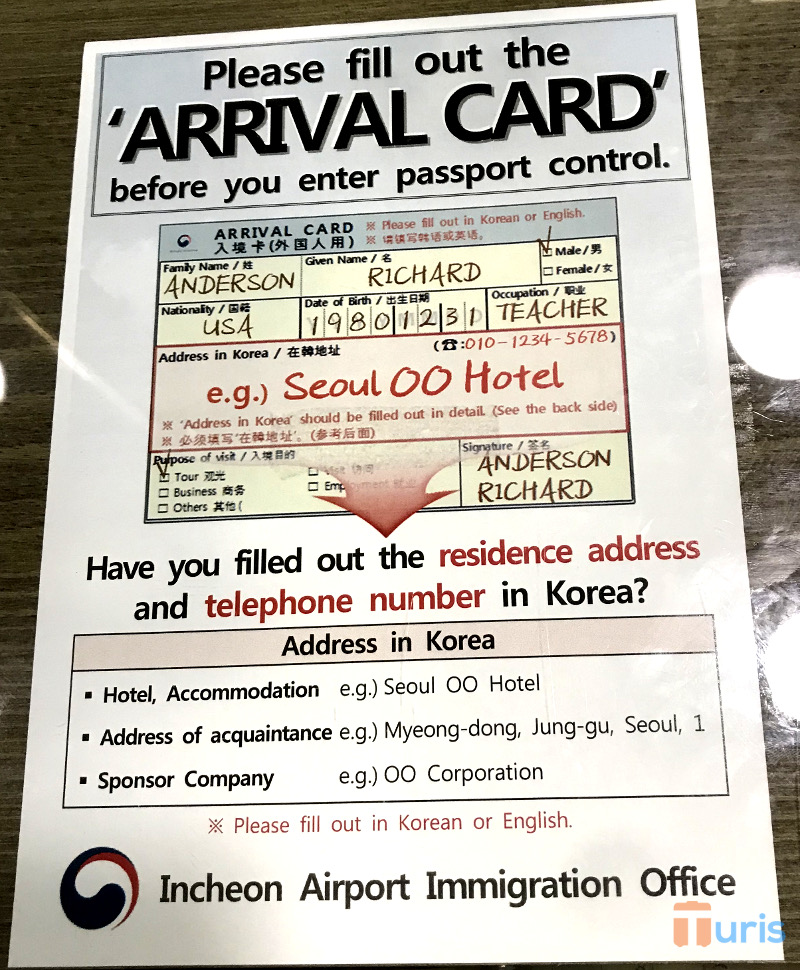
You may ask what information to be put in the phone number. You can simply put the phone number of the hotel or your accommodation facility, your host’s (friend or family) number, or a local Korean number that you will use during your stay in Korea.
South Korea Entry Confirmation
Once you pass the immigration clearance, the immigration officer will hand you a piece of paper, which is the South Korea Entry confirmation. You can refer to paper on your status of stay and the validity of your visa/stay permit. Pay serious attention on the date written for the validity of your stay. Ensure that you leave the country not later than the date written in the entry confirmation. Do not overstay since you may get fined or face difficulties in your future visit to Korea.
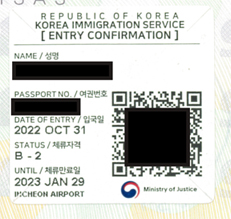
If you plan to extend your stay in Korea, you can go to local immigration office and request for a visa extension. However, you may need to provide additional document depending on your original status of stay and nationality.
That’s a wrap. Enjoy your stay in Korea!
Klook.com